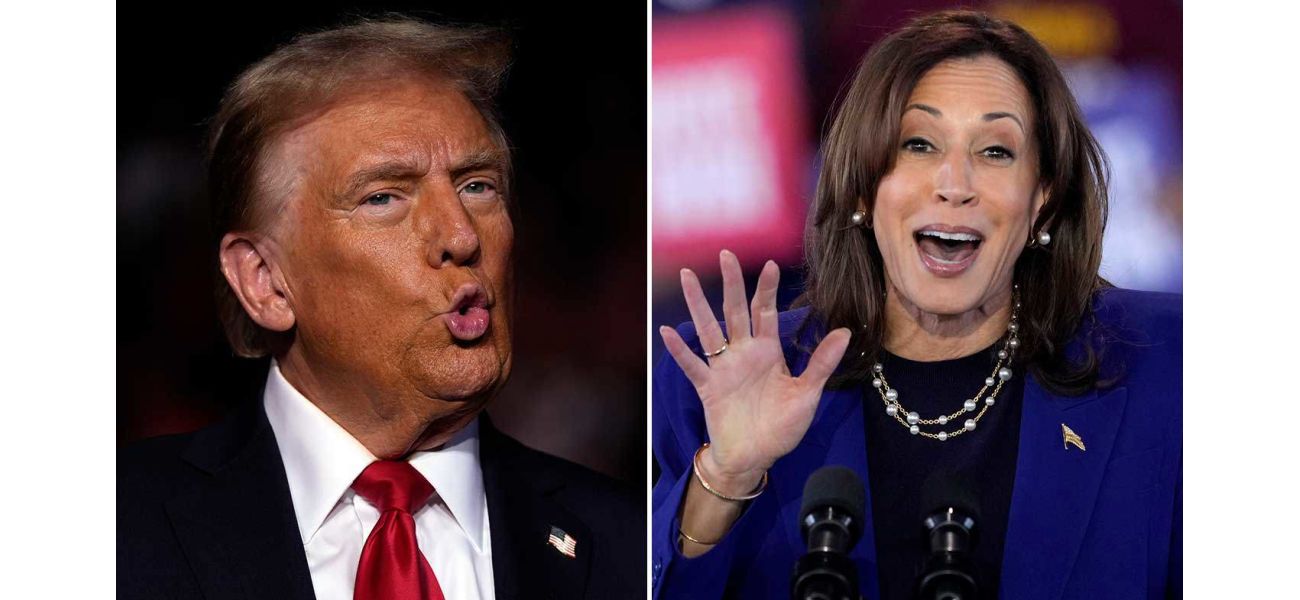The latest survey reveals an unexpected outcome in the American election.
Study shows a move towards Harris in a key state previously disregarded by some.
November 3rd 2024.

In the final Iowa Poll before Election Day, US Vice President Kamala Harris holds a narrow lead with 47% of likely voters compared to former president Donald Trump's 44%. This falls within the poll's margin of error, indicating a tight race with no clear front-runner in a state that is traditionally seen as a stronghold for the Republican party.
Interestingly, there has been a shift towards Harris since the previous Iowa Poll in September, where Trump had a slight advantage. In that poll, he had the support of 47% of likely voters while Harris trailed with 43%. It's worth noting that there hasn't been much high-quality polling in Iowa during this election cycle to compare these findings with.
Iowa has a mixed record in recent presidential elections, with Barack Obama winning in 2008 and 2012, while Trump claimed victory in 2016 and again in 2020. The new poll indicates that women in the state are strongly in favor of Harris, with 56% supporting her compared to only 36% for Trump. Men, on the other hand, have a narrower margin in favor of Trump, with 52% of likely male voters backing him and 38% supporting Harris.
Interestingly, independent voters in Iowa have switched their support to Harris, with 46% now favoring her compared to 39% for Trump. This is a significant change from earlier polls this year, where independents tended to support Trump.
The age breakdown of likely voters also shows a clear divide, with older voters firmly in Harris' camp. Those aged 65 or older support her by a margin of 55% to 36% for Trump. On the other hand, younger voters (under 35) are split almost evenly, with 46% favoring Harris and 44% backing Trump.
The Iowa Poll also found that the majority of likely voters (over 90%) have already made up their minds about who to support, with only 7% saying they could be persuaded and 2% still undecided. This shows a high level of certainty among voters in the state.
The Des Moines Register/Mediacom Iowa Poll was conducted by Selzer & Co between October 28-31, with 808 likely voters interviewed by telephone. The margin of error for likely voters is plus or minus 3.4 points.
Interestingly, there has been a shift towards Harris since the previous Iowa Poll in September, where Trump had a slight advantage. In that poll, he had the support of 47% of likely voters while Harris trailed with 43%. It's worth noting that there hasn't been much high-quality polling in Iowa during this election cycle to compare these findings with.
Iowa has a mixed record in recent presidential elections, with Barack Obama winning in 2008 and 2012, while Trump claimed victory in 2016 and again in 2020. The new poll indicates that women in the state are strongly in favor of Harris, with 56% supporting her compared to only 36% for Trump. Men, on the other hand, have a narrower margin in favor of Trump, with 52% of likely male voters backing him and 38% supporting Harris.
Interestingly, independent voters in Iowa have switched their support to Harris, with 46% now favoring her compared to 39% for Trump. This is a significant change from earlier polls this year, where independents tended to support Trump.
The age breakdown of likely voters also shows a clear divide, with older voters firmly in Harris' camp. Those aged 65 or older support her by a margin of 55% to 36% for Trump. On the other hand, younger voters (under 35) are split almost evenly, with 46% favoring Harris and 44% backing Trump.
The Iowa Poll also found that the majority of likely voters (over 90%) have already made up their minds about who to support, with only 7% saying they could be persuaded and 2% still undecided. This shows a high level of certainty among voters in the state.
The Des Moines Register/Mediacom Iowa Poll was conducted by Selzer & Co between October 28-31, with 808 likely voters interviewed by telephone. The margin of error for likely voters is plus or minus 3.4 points.
[This article has been trending online recently and has been generated with AI. Your feed is customized.]
[Generative AI is experimental.]
0
0
Submit Comment





